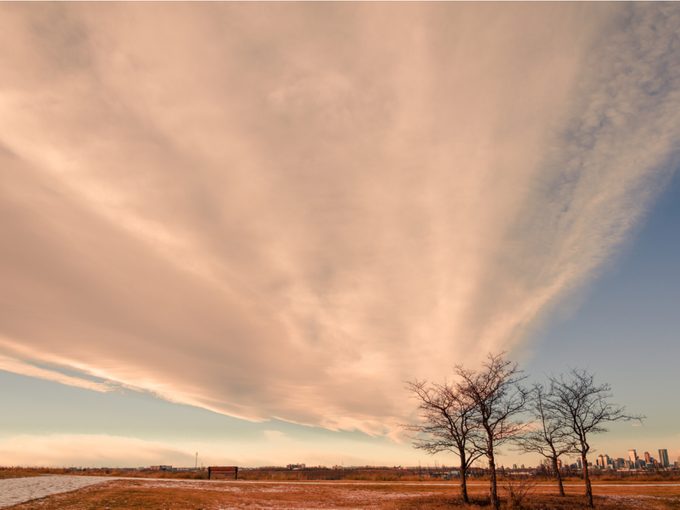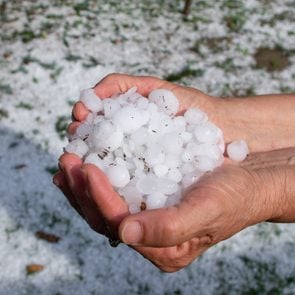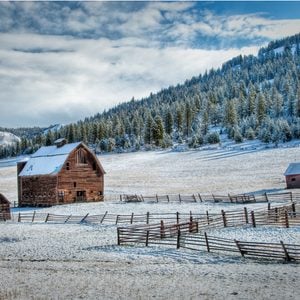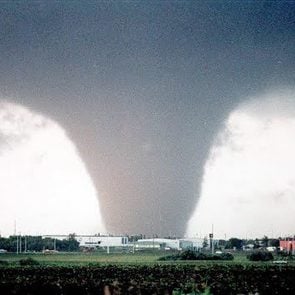In One Hour, the Temperature in This Alberta Town Rose 40 Degrees
The Chinook wind on January 10, 1962, set the stage for the most extreme temperature change in Canadian history.

Canada’s Biggest Temperature Change in One Day
Southern Alberta has long been known for its windy weather, and it’s not uncommon for winds to climb to speeds of 100 km/h. These powerful gusts are not only strong enough to blow over transport trucks, they can also cause extreme (and rapid) temperature fluctuations.
Pincher Creek, Alberta, is located about 200 kilometres south of Calgary and holds the national record for the biggest temperature change in one day. According to reports, on January 10, 1962, the temperature rose from a chilly from -19 C to a balmy 22 C—in just one hour. That’s an increase of 41 degrees (or roughly two-thirds of a degree per minute)!
This dramatic shift from the depths of winter to a summer’s day was entirely due to the warm, dry Chinook winds, a local weather phenomenon that has a huge impact on the forecasts for southern Alberta. These warm, dry winds occur when air from the Pacific Ocean moves eastward from coastal B.C. and hits the Rockies. There, the air cools and also releases its moisture as it climbs up the mountains: for every 100 metres it rises, its temperature decreases by about half a degree Celsius. Once the air hits the top of the mountains, it begins to sweep downhill and warms at a much quicker rate: for every 100 metres it descends, the temperature increases by a full degree. By the time the winds reach Calgary, for example, a distinctive cloud band called a Chinook arch can be seen and the temperature climbs rapidly. Once they get going, Chinook winds can also move at hurricane-like speeds, up to 120 km/h.
The wind gets its name from the Chinook language that’s spoken by the Indigenous people living in what is now Oregon and Washington state, near the Columbia River, where the winds are believed to have originated. Blackfoot people who live in the Canadian plains region, however, call this warm wind the “snow eater.” In other parts of the world, different terms are used: “föhn winds” in the European Alps, “Santa Ana” in southern California and “puelche” in the Andes Mountains.

While these impressive mountain winds happen all over the world, southern Alberta is sometimes called the Chinook belt. That’s thanks to the positioning of the polar jet stream (a band of strong winds that blow west to east all around the world), leading to higher average instances of Chinook winds—up to 30 or more per year.
The respite from chilly weather isn’t all good news, however. Chinook winds can spell disaster for agriculture, drying out soil quickly and bringing plants and trees out of hibernation too early. They’ve also been known to trigger flash floods with their power to melt snow rapidly. They can occur at any time of year, but they’re more common (and the warmth is more obvious) in the winter.
While 1962’s Chinook winds in Pincher Creek were responsible for one of Canada’s most extreme temperature changes, the entire country has been experiencing unprecedented outbreaks of freak weather events as the effects of climate change accelerate. According to a 2019 report, “Canada’s Changing Climate,” the loss of ice and snow is reducing the earth’s ability to reflect heat, which is increasing heat absorption and solar radiation. These factors are contributing to Canada’s rapid warming—at a rate far surpassing the global average—and will lead to more extreme heat events in the near future.
Next, check out the worst natural disasters in Canada’s history.






